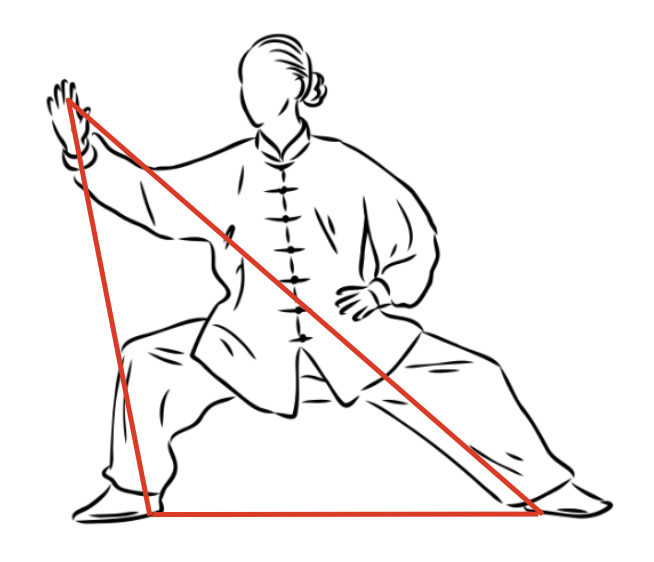The Six Harmonies
Several Tai Chi principles provide a framework for our practice, each offering valuable insights into when, why and how the body transitions from one posture to the next. One key principle is the concept of the Six Harmonies, which consist of three internal and three external elements that integrate to create unity between physical movement and thought.
External Harmonies
1. Hands harmonise with feet: The movements of the hands and feet should be synchronised. Coordination between the upper and lower body ensures continuous, balanced movement.
2. Hips harmonise with shoulders: The hips and shoulders move together to maintain proper alignment of the torso. This coordinated movement occurs across horizontal, vertical, and diagonal planes. This connection is crucial for generating power and maintaining stability throughout the body.
3. Elbows harmonise with knees: For every movement of the elbows, there should be a corresponding movement of the knees, maintaining structure. This relationship mirrors that of the hips and shoulders. The elbows and knees must work together, with elbows often aligned with knees to optimise physical structure and strength. The elbows are driven by the shoulders, and the knees by the hips.
The term 'harmony' is often misconstrued as merely balancing elements on the same side, such as the right hand with the right foot. In reality, true harmony adheres to the 'figure 8' principle, where opposite hand and foot, shoulder and hip, as well as elbow and knee, are interconnected. (See illustration, below)
Internal Harmonies
1. Heart harmonises with intention: The heart (or spirit, or mind) must align with intention. Our emotions should be calm and focused so that our intention can guide movements with clarity and purpose. A focused intention ensures control, making movements deliberate and precise rather than erratic.
2. Intention harmonises with Qi: Once the intention is set, it must harmonise with the flow of Qi. The mind directs the Qi, which in turn energises and animates the body. For this to happen, the body must be relaxed, as muscle tension obstructs Qi flow. Correct Tai Chi practice uses internal power, rather than muscular strength.
3. Qi harmonises with movement: Finally, Qi harmonises with physical force. However, the body’s strength does not rely on brute force but rather on a relaxed, responsive energy. Qi provides vitality to force, ensuring that movements are powerful yet flexible.
The concept of the Six Harmonies is a fundamental principle in Tai Chi, referring to the integration of body and mind to achieve smooth and balanced movements.


